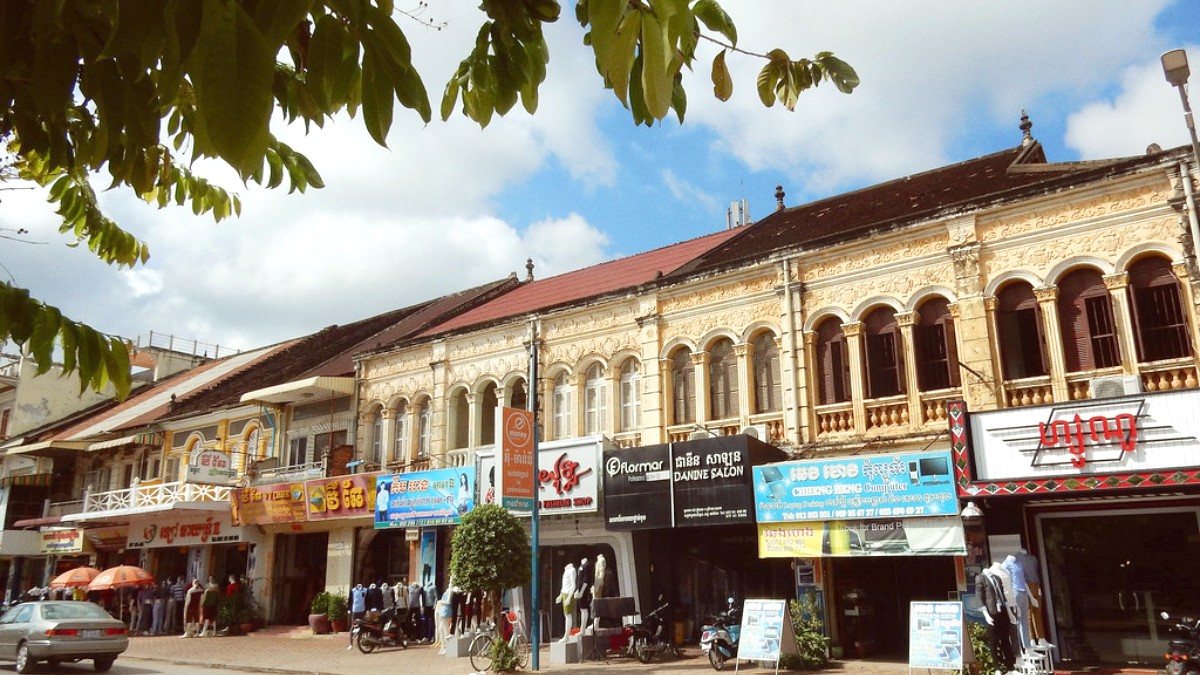
Northwestern Cambodia, Cambodia
Khmer cuisine, Cambodia's traditional food, features a balanced flavor profile. It tends to be less spicy than Thai food and uses fewer fresh herbs than Vietnamese cuisine.
Its emphasis rests on a harmonious blend of sweet, sour, salty, and bitter tastes. Cambodian cuisine displays influences from its neighbors and former colonizers, including Indian, Chinese, and French elements.
Cambodians commonly use a spoon and fork; the fork pushes food onto the spoon. Chopsticks are typical for noodle dishes. Dishes are often shared among diners, placed centrally.
It is polite to finish your rice. Tipping, while not traditionally customary, is increasingly appreciated in tourist-oriented restaurants. Refer to section 2.3 for detailed tipping expectations.
Do not point your feet at anyone, especially not at food or religious images. This shows respect in Cambodian culture.
Often Cambodia's national dish. This creamy, mild fish curry is flavored with coconut milk, Kroeung (lemongrass, galangal, turmeric, kaffir lime), and noni leaves. Traditionally steamed in banana leaves.
Find in most local and mid-range restaurants.
A refreshing and tangy soup made with freshwater fish, tamarind, pineapple, tomatoes, and various herbs. It conveys a delightful balance of sour and savory notes.
Available at local Khmer restaurants.
Marinated beef, often stir-fried with onions and served on a bed of lettuce, tomatoes, and cucumber. It comes with a dipping sauce of lime juice, salt, and pepper (often with a fried egg on top).
A popular and flavorful dish found almost everywhere.
Angkor Beer and Cambodia Beer are the most common local lagers, widely available and affordable. Fresh sugarcane juice, iced coffee with condensed milk (Kape Teuk Doh Ko), fresh coconut water, and fruit shakes (Teuk Kroch Krolok) are popular non-alcoholic options.
Num Chek Chien (Fried Banana): Sliced bananas coated in a sweet batter and deep-fried until golden and crispy. Num Plae Ai (Sticky Rice Dumplings): Small, round sticky rice dumplings filled with palm sugar syrup and coated in fresh grated coconut. Many desserts also feature sticky rice.
Battambang has limited dedicated fine dining establishments. Some upscale or boutique hotels may present refined Khmer or international cuisine in a more formal setting. These are good choices for a special evening meal.
Numerous mid-range restaurants cater to tourists and locals, displaying a mix of Khmer and Western dishes. They include comfortable seating, air conditioning (often), and good service.
Psar Nath (Central Market) is an excellent spot for cheap, authentic Cambodian street food and local eateries. You will find a wide variety of noodle dishes, rice dishes, and snacks throughout the day. Street stalls are abundant throughout the city, especially in the evenings.
The main market in Battambang features a large and bustling food section. It is a fantastic place to try various street foods, fresh fruits, and local snacks.
Offers an immersive cultural experience.
A smaller local market, also with some food stalls. This market gives another glimpse into daily Cambodian life.
A more local and authentic market experience.
Pizza and pasta options.
Some French dishes, a legacy of colonial history.
Burgers, sandwiches, other familiar items.
Coffee shops with light Western fare.
Dedicated Halal restaurants are limited in Battambang, mainly catering to the small Muslim Cham community. Some guesthouses might arrange Halal food upon request.
Kosher food is extremely limited to non-existent in Battambang. Travelers requiring Kosher meals should plan to bring their own provisions.
Finding strictly gluten-free options can be challenging. Many sauces (like soy sauce) contain wheat. Focus on fresh, plain dishes like grilled meats or fish with rice, and steamed vegetables.
Communicating specific allergies (e.g., nuts, shellfish) can be difficult without proficiency in Khmer. Consider carrying a Food allergy translation card in Khmer that clearly states your allergies.
It is advisable to write down your specific dietary needs in Khmer to present to restaurant staff. This minimizes miscommunication and helps a smoother dining experience.
Prior research into restaurants with clear menu labeling or positive reviews for specific dietary accommodations can guide your choices. Consider packing essential non-perishable items if your dietary needs are very strict.
Engage deeply with Cambodian cuisine through classes at places like Nary Kitchen or Smokin' Pot. These classes instruct you to prepare traditional Khmer dishes, giving insight into local ingredients and culinary techniques.
Local guides or guesthouses arrange market and street food tours. These tours often deliver insights into local ingredients, explain dishes, and guide you through bustling food stalls.
Many tuk-tuk drivers offer tours to surrounding villages that specialize in food production, like rice paper making, prahok production, and palm sugar production.
Battambang's dining scene emphasizes traditional Khmer experiences rather than highly unique or experimental dining concepts. Its charm resides in authenticity.
The focus lies on simple, delicious, and traditional preparations.
The culinary scene is defined by the freshness of ingredients, many sourced from the fertile agricultural lands surrounding the city.
This direct farm-to-table connection is an unique aspect.
Do not hesitate to try street food! Select stalls with high turnover and visible cooking, as this usually indicates freshness and good hygiene.
It is a practical and fun way to learn about Cambodian ingredients and cooking methods, allowing you to recreate dishes at home.
Capture the colors and textures of the local markets and dishes. Photography enhances the memory of your culinary adventure.
Exploring Battambang’s culinary offerings means trying its signature dishes, street food, and unique beverages.